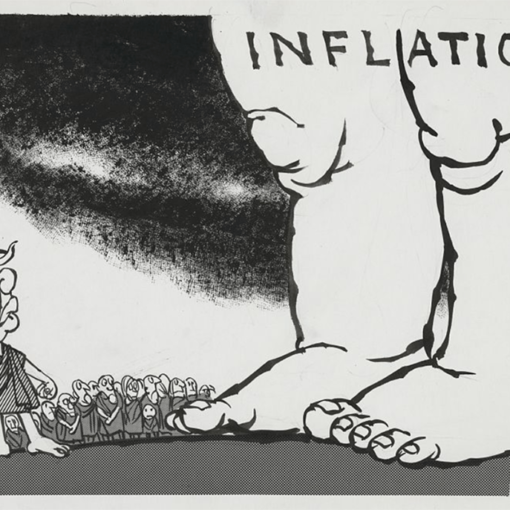[ad_1]
The benefits of factor investing as stand-alone strategies are well documented. Less well known is the positive impact factor strategies can have when they are added to institutional investors’ completion portfolios.
By employing factor strategies at the plan level, asset owners can fine-tune their allocations to suit their specific objectives in an efficient and cost-effective manner. In this post, I will discuss how factor strategies can be effectively utilized within completion portfolios to enhance plan performance and risk control.
The symbiotic nature of these two commonly pursued goals in institutional portfolios begs the question, “Why wouldn’t you include factor strategies in your completion portfolio toolkit?”

Review: Factor Strategies and Completion Portfolios
Factor strategies target specific investment attributes like value, size, momentum, low volatility, low investment, and high profitability. Attributes such as these are the primary drivers of asset returns and have historically demonstrated a persistent risk premium.
An integral part of modern portfolio management, factor strategies offer investors a systematic approach to capturing specific risk premia and enhancing portfolio diversification.
Now let’s look at a completion portfolio. It is a strategic program designed to complement existing holdings and fill in any gaps or inefficiencies within an asset owner’s overall portfolio. These portfolios make supplementary allocations aimed at achieving specific objectives, such as enhancing diversification, managing risk, or capturing additional sources of return.
The concept of completion portfolios stems from the recognition that traditional asset allocations may not fully capture all available investment opportunities or adequately address specific investment goals. Completion portfolios are tailored to address these shortcomings by incorporating assets or strategies that can provide complementary benefits to existing portfolio holdings.
Completion portfolios can take various forms, depending on asset owners’ objectives and risk tolerance. They may include different asset classes and strategies that offer unique risk-return profiles and low correlations to traditional stocks and bonds.
One common application of completion portfolios within the context of institutional asset management is where investors seek to optimize portfolio efficiency and achieve specific performance benchmarks. In this way, completion portfolios may be employed to fine-tune asset allocations, adjust risk exposures, or exploit market inefficiencies, thereby enhancing overall portfolio performance and risk-adjusted returns.
Clearly, completion portfolios play an important role for asset owners by providing them with a flexible and dynamic framework to address evolving investment objectives and market conditions. Whether used to enhance diversification, manage risk, or capture additional sources of return, completion portfolios offer a strategic tool for asset owners seeking to optimize their overall investment portfolios and achieve their long-term investment goals.
The Benefits of Adding Factor Strategies
There are several ways in which factor strategies can help enhance the building of completion portfolios. The first is diversification enhancement. Factor strategies offer an opportunity to diversify a completion portfolio beyond traditional sector and geographic approaches to investing. By allocating to factors with low correlation to existing holdings, asset owners can potentially reduce overall portfolio risk and enhance risk-adjusted returns.
The second benefit of utilizing factor strategies in completion portfolios is risk management. Certain factors, such as low volatility, have defensive characteristics that can help mitigate downside risk during market downturns. Incorporating these factors in a completion portfolio can provide additional portfolio stability during periods of heightened market volatility.
Performance enhancement is another potential benefit of using factor strategies in completion portfolios. Factor strategies can generate excess returns over broad market indices over the long term. By tilting toward factors that have historically delivered superior risk-adjusted returns, completion portfolios can capture these additional sources of return and potentially outperform the overall market.
A major role of factor strategies in completion portfolios is that they can provide targeted exposure. Completion portfolios can be customized to target specific factors based on asset owners’ objectives and risk tolerances. Whether seeking to capitalize on value opportunities or capitalize on stock momentum, factor strategies provide a systematic framework for achieving targeted exposures within the portfolio.
Factor strategies can also imbue completion portfolios with enhanced adaptability. Asset owners can target factor exposures dynamically based on changing market conditions, economic outlook, or investment goals. This adaptability is particularly valuable in completion portfolios, where the goal is to calibrate allocations to optimize risk-return characteristics.
Conclusion
Factor investing is one of the pillars of modern investing. The benefits of standalone factor strategies are well known, and there is a growing recognition of their value in completion portfolios. In this post, I highlighted the varied benefits that factor investing can bring to completion portfolios including diversification enhancement, risk management, performance enhancement, targeted exposure, and adaptability.
[ad_2]
Source link






 Bitcoin
Bitcoin  Tether
Tether  XRP
XRP  USDC
USDC  Lido Staked Ether
Lido Staked Ether  Dogecoin
Dogecoin  LEO Token
LEO Token